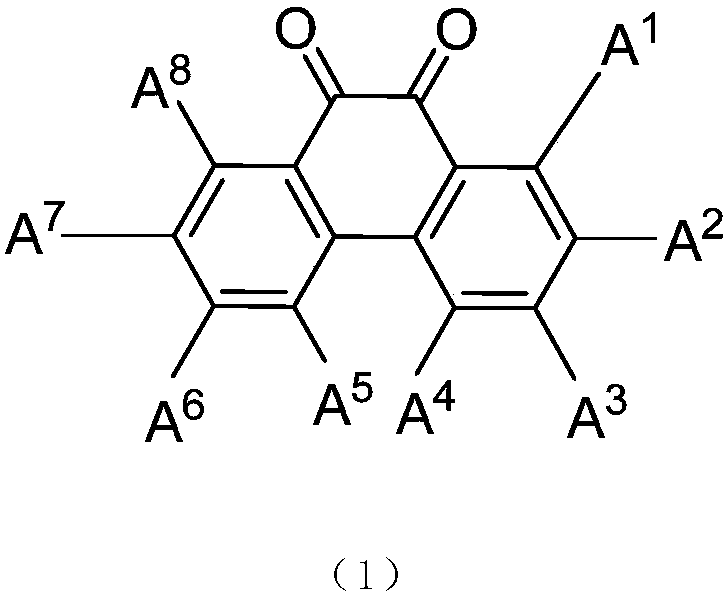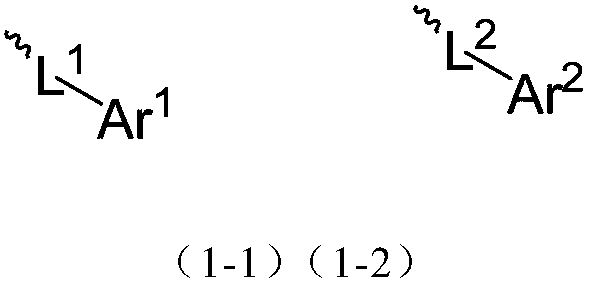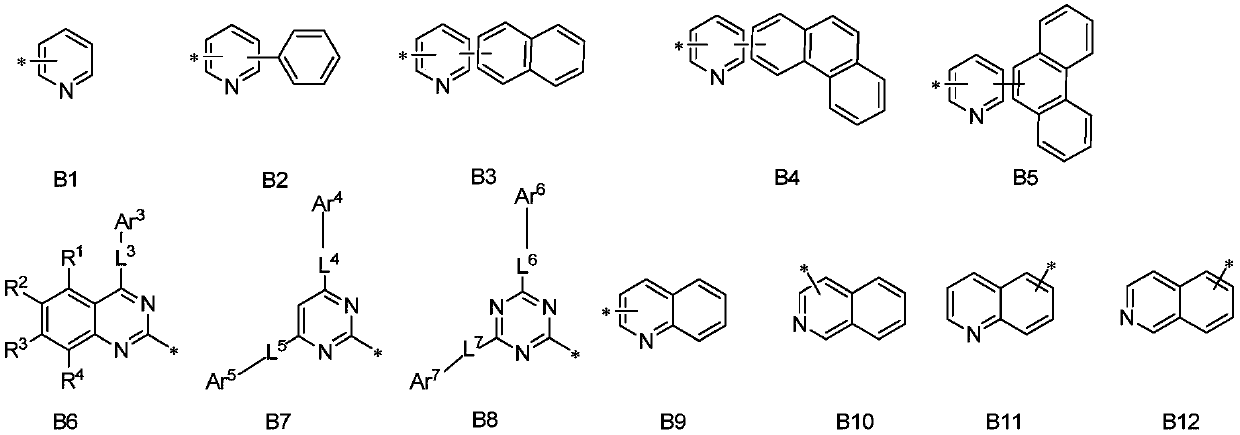Compound and application thereof
A general formula compound and selected technology, applied in the field of organic compounds, can solve the problems of reducing recombination probability, affecting power efficiency, reducing device luminous efficiency, etc., and achieve the effect of improving electron injection and transmission, and improving injection ability
- Summary
- Abstract
- Description
- Claims
- Application Information
AI Technical Summary
Problems solved by technology
Method used
Image
Examples
preparation example Construction
[0057] Preparation of intermediate 1-1
[0058] After dissolving 2,7-dibromophenanthrenequinone (100g, 0.27mol) in 1000ml 1,4-dioxane in a flask, add biboronic acid pinacol ester (140g, 0.55mol), potassium acetate (81g , 0.82mol), under the protection of nitrogen, [1,1'-bis(diphenylphosphino)ferrocene]palladium dichloride (4g, 5.5mmol) was added, replaced by nitrogen 3 times, heated to reflux and stirred for 3 hours, TLC showed that the reaction was complete, concentrated, added 300ml ethyl acetate and 200ml water, left to separate the liquid, the aqueous phase was extracted twice with ethyl acetate, the organic phase was combined, dried and suction filtered, concentrated, and dried to obtain off-white solid compound 1- 1 (107 g, 86%).
[0059] Preparation of compound C2
[0060] Intermediate 1-1 (30g, 0.065mol) was added to a flask containing 300ml of tetrahydrofuran and 60ml of water, followed by adding 4-chloro-2,6-diphenylpyrimidine (35g, 0.13mol), potassium carbonate (2...
Embodiment approach
[0086] The OLED includes a first electrode and a second electrode, and a layer of organic material between the electrodes. The organic material can in turn be divided into regions. For example, the organic material layer may include a hole transport region, a light emitting layer, and an electron transport region.
[0087] In particular embodiments, a substrate may be used either below the first electrode or above the second electrode. The substrates are all glass or polymer materials with excellent mechanical strength, thermal stability, water resistance and transparency. In addition, a thin-film transistor (TFT) may be provided on a substrate for a display.
[0088] The first electrode may be formed by sputtering or depositing a material used as the first electrode on the substrate. When the first electrode is used as the anode, oxide transparent conductive materials such as indium tin oxide (ITO), indium zinc oxide (IZO), tin dioxide (SnO2), zinc oxide (ZnO) and any comb...
Embodiment 1
[0126] Using the compound C2 of the present invention as an electron transport material, an organic electroluminescent device was prepared according to the above-mentioned preparation process of the organic electroluminescent device, and the device performance was tested according to the above-mentioned organic electroluminescent device testing method.
PUM
| Property | Measurement | Unit |
|---|---|---|
| Molecular weight | aaaaa | aaaaa |
| Molecular weight | aaaaa | aaaaa |
| Molecular weight | aaaaa | aaaaa |
Abstract
Description
Claims
Application Information
 Login to View More
Login to View More - R&D
- Intellectual Property
- Life Sciences
- Materials
- Tech Scout
- Unparalleled Data Quality
- Higher Quality Content
- 60% Fewer Hallucinations
Browse by: Latest US Patents, China's latest patents, Technical Efficacy Thesaurus, Application Domain, Technology Topic, Popular Technical Reports.
© 2025 PatSnap. All rights reserved.Legal|Privacy policy|Modern Slavery Act Transparency Statement|Sitemap|About US| Contact US: help@patsnap.com



